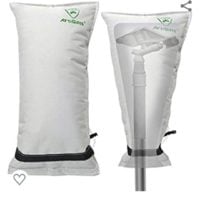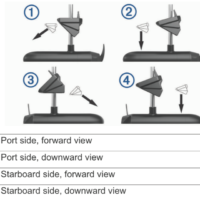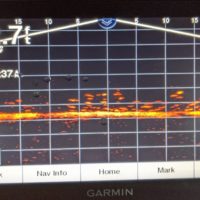Had a good chance to target big crappies with my Livescope this weekend. My buddy was running a Vex 28 next to me and it was interesting to compare the information coming from both of them side by side. I’m a long-time Vex user who just got Livescope this season. We were fishing in 25 feet of water and at that depth, the Livescope was showing a sonar picture that was 24 feet across from left to right and about 10 feet thick from front to back. A couple of things I learned about the crappies we were seeing:
1. They definitely moved in schools. Solitary fish were very rare. One thing that surprised me was that the schools we saw tended to be long and narrow. The fish were swimming in about a 4 foot band of the water and there were typically stacked no more than 2 or 3 high as you looked at them vertically. A lot of those fish seemed to be in “commuter” mode…just swimming at a slow and steady pace like they were in commuter traffic on the highway and following nose to tail. Most of the schools we saw had 20 or more fish in them but in a long thin line vs. in more of a ball of fish. On the Vex, it looked like you had one or two fish in the area but in reality, there were probably 10 fish within 6 feet of the bait. It was a good reminder for me that if you see one fish on your Vex, there are probably a lot more in close proximity that you aren’t seeing. From each school, we maybe caught 4 fish out of the total 20 or 25. A few fish in each school were actively feeding and the others were just in that commuter mode I described above.
2. I learned a lot from the “live” image from Livescope. It was very interesting to see fish 10 feet away from my bait and being able to change up my jigging motion or bait to get them to respond. Livescope gives you a live image from a big area underwater. Think of it as sort of a cross between an underwater camera (that isn’t affected by water clarity or low light) and a traditional graph. You can see the outline of the fish, the size of the fish and even the fins as the fish swims towards or away from your bait while you watch them swimming in real time. You can definitely tell the species of the fish based on the shape you see on the screen combined with their behavior and where they are in the water column. Comparing the Vex and the Livescope side by side showed me how close to underneath you those fish need to be for you to see them on a flasher. At times we had 20 fish on the Livescope screen and none showing on the Vex based on the fish being outside the cone of the flasher. With the flasher only, we might have decided we were in a bad spot with no fish in the area. With the Livescope, we could see there were fish there and it was a matter of figuring out what jigging motion and/or baits they were after.
Livescope is a very expensive tool and is not for everybody but I would encourage anyone to try one out…either rent one or get a guide who has them or fish next to someone you know who has one. In future situations where I will fish with just my flasher, I learned a lot just in a couple of hours about what I can see and what I can’t see with my flasher. I also learned a lot about fish behavior because I was watching them move and feed in real time. All of this was done in the “down-view” mode on Livescope. Forward view and using it to find fish is something I will describe in a separate post.


